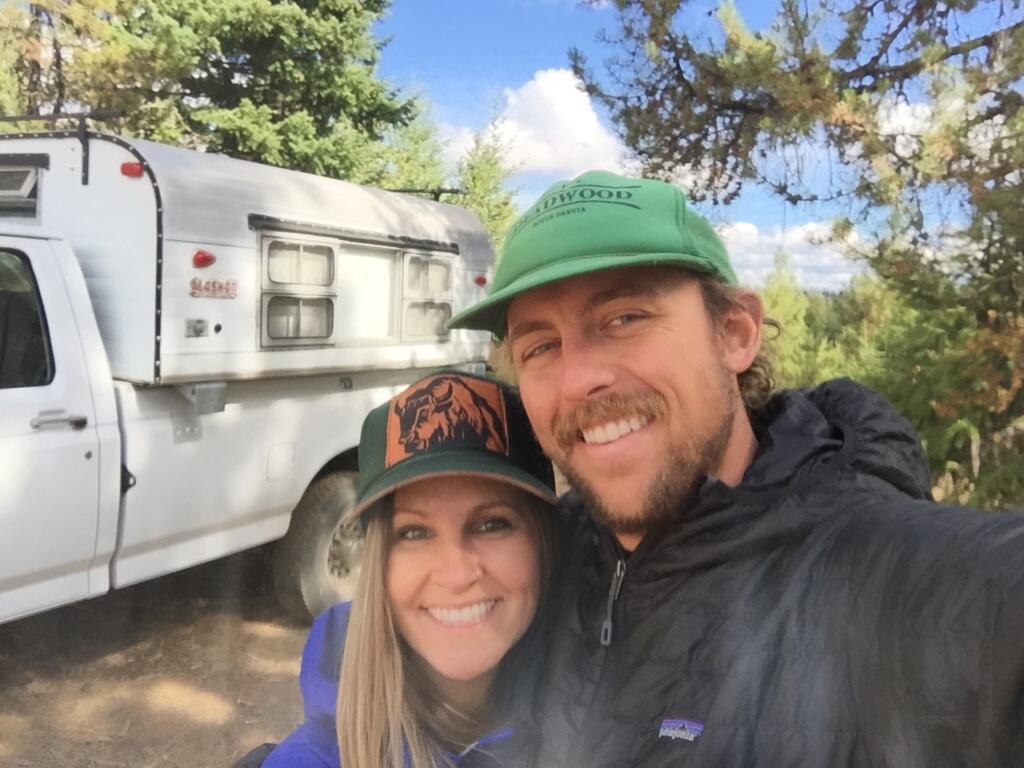Curran and Dawn Foley don’t just own an Alaskan Camper — they’ve owned four, and built a life around every one.
Their story isn’t just about where they’ve gone — it’s about what’s gone with them. Each of their four Alaskans has marked a chapter in their life together: the mid-’80s cabover that started it all, a classic ’64 non-cabover that carried them through wildland fire seasons and early marriage, an ’80s cabover they remodeled by hand while navigating their son’s early health challenges, and the 2002 model they rebuilt with Curran’s grandfather when the world slowed down in 2020.
They’ve crossed state lines, changed jobs, and faced storms tougher than weather alone. When their son was born with serious health complications, hospitals and appointments filled their days. Getting out in the camper became the antidote — a quiet, steady way to trade fluorescent lights for open air, even if only for a weekend.
“The outdoors was our escape from all the doctor visits and surgeries,” Dawn said. “It’s how we reset.”
That reset turned into a rhythm. Now, with their daughter in tow, the Foleys spend their days chasing shoulder-season skies and spending Halloween tucked inside their Alaskan on the coast — a simple tradition that grounds them year after year and reminds them that some things are worth holding onto, especially the ones that carry you through.
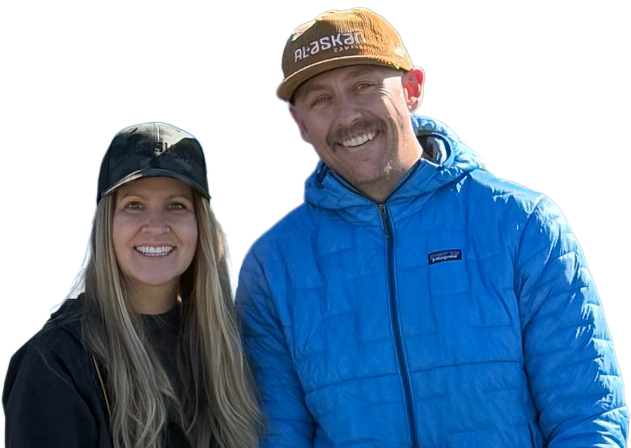
Meet Curran and Dawn
Home for the Foleys is Reno, though their story stretches from Alaska to Idaho and back again. Curran’s a firefighter; Dawn grew up in Alaska, where weather and grit come standard. He picked her up for their first date in an old Alaskan Camper — the same one that started their lifelong habit of staying close.
These days, not much has changed. The kids pile in with coloring books, the dogs — Ember and Louie — curl up near the heater vents, and together they trade routine for fresh air. The Alaskan isn’t an escape; it’s their way of slowing down, finding balance, and remembering what matters most: a little space outside, and plenty inside for each other.
The Four Alaskan Campers
1980s Cabover – The One That Started It All
Side dinette | All-original interior | Thule rack + ski box | Old-body-style Ford
Curran found his first Alaskan outside Reno around 2008–2009 while he was doing wildland fire work and needed a pop-up he could live in between assignments and tuck off BLM and Forest Service roads. The mid-’80s cabover he bought had a side dinette, a Thule rack with a ski box on top, and an interior that was still all original — the kind of shape you only get when someone’s actually maintained it.
“It just fit,” he said. “Old truck, old camper. It matched.”
That camper needed little more than gas and a destination. It was the one he picked Dawn up for their first date — the one that turned camping from a habit into a way of life. “She’s from Alaska,” he laughs. “She’s used to dirtbags.”
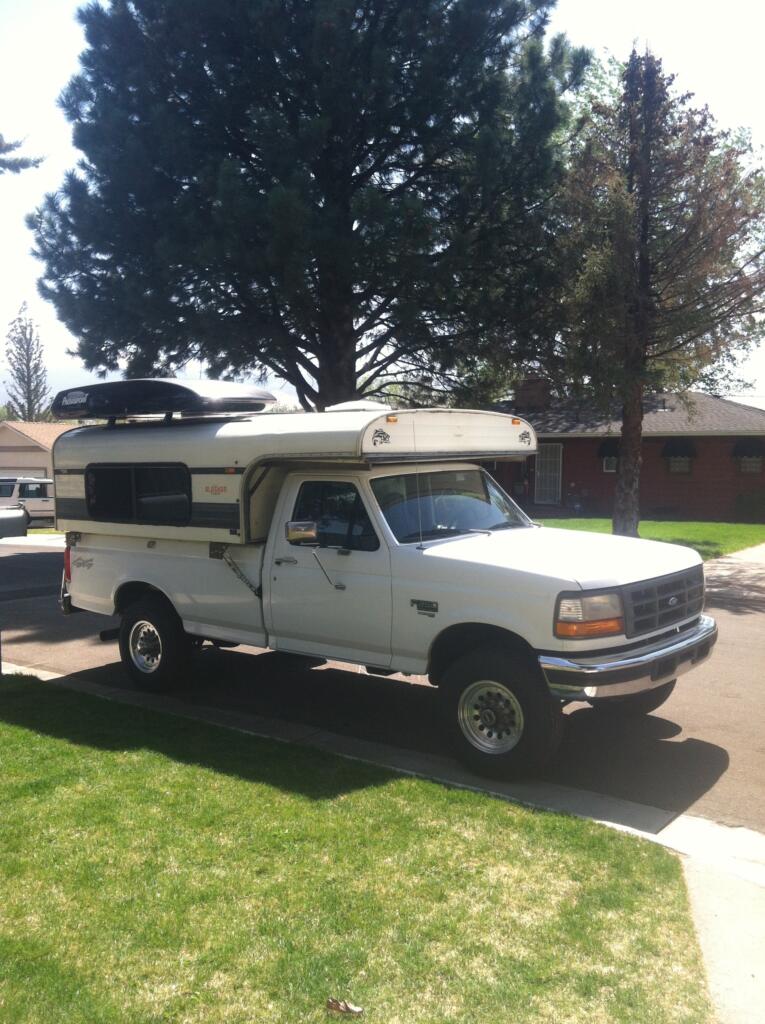
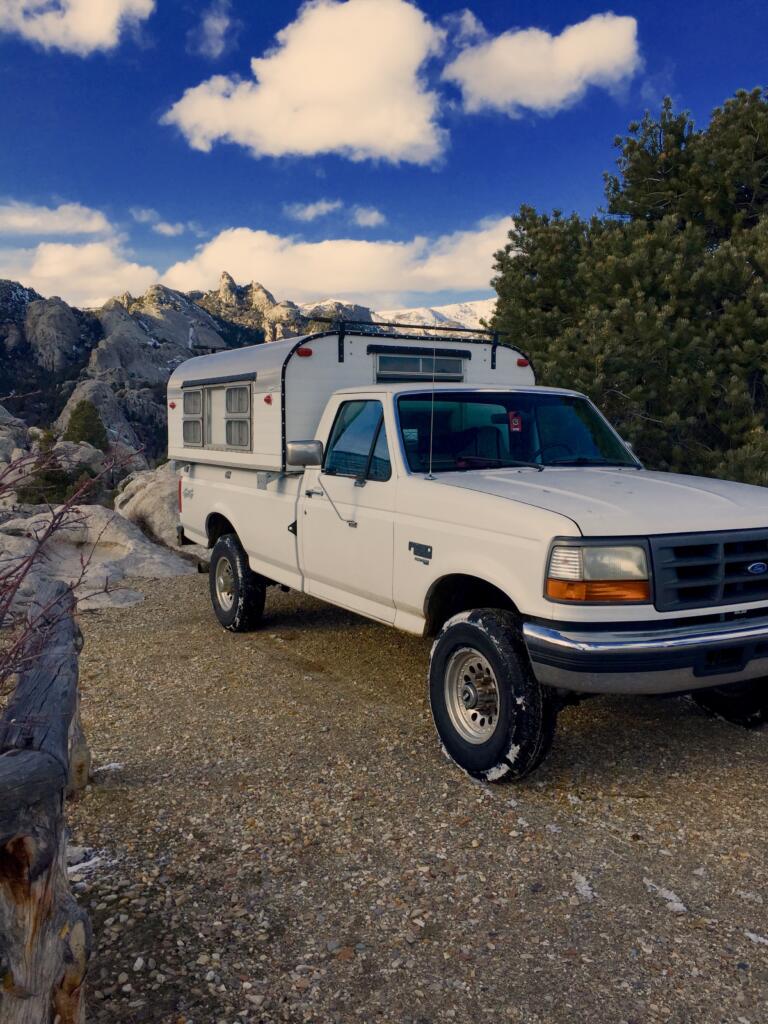
1964 Non-Cabover – Vintage Lines, Endless Grit
Pop-out windows | Original wood cabinetry | Solo trips + Idaho full-timer
The second Alaskan came after a move to Washington — a 1964 non-cabover that still carried its vintage bones. The previous owner had started to refresh the interior, but most of the original woodwork and hardware were intact, including those classic pop-out windows. Despite its age, it was sturdy, dry, and surprisingly ready to roll.
Dawn often took it out with friends while Curran was on wildland fire assignments — easy to load, simple to run, and light enough for solo trips. Later, when Curran relocated to Idaho ahead of the family, he lived in it full-time. “It was awesome,” he said. “Really cozy, really functional.”
That 60-year-old camper proved what Alaskan owners already know: when you maintain one, it doesn’t wear out — it just keeps going. “The ’60s model honestly held up the best,” Curran said.
1980s Cabover – Rebuilt by Hand, Together
Side dinette | Butcher-block counters | Painted cabinets | Rewired + reupholstered interior
By the time their son was born — and their days filled with appointments and early surgeries — the Foleys needed a project that pulled them back outside. They found another 1980s cabover Alaskan and poured themselves into it. Together they stripped it down and rebuilt it piece by piece. Dawn handled the design — paint, lighting, upholstery — while Curran tackled wiring, cabinetry, and systems.
They added butcher-block countertops, repainted the cabinets, replaced the lights, and refreshed the seating. “We didn’t just fix it up,” Dawn said. “We made it ours.”
That camper became their outlet — a quiet project that gave them something to look forward to when everything else felt out of their control. It carried them through a full season of travel, from Glacier National Park to weekends in the Sawtooths, and reminded them that getting outside still had the power to heal.
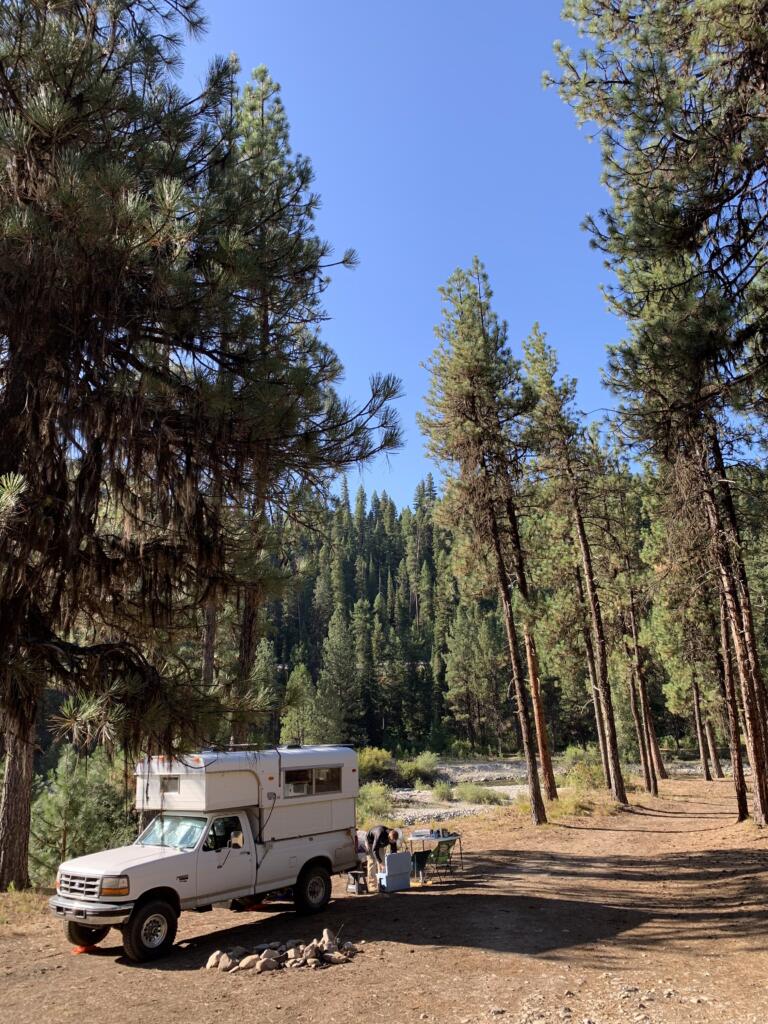
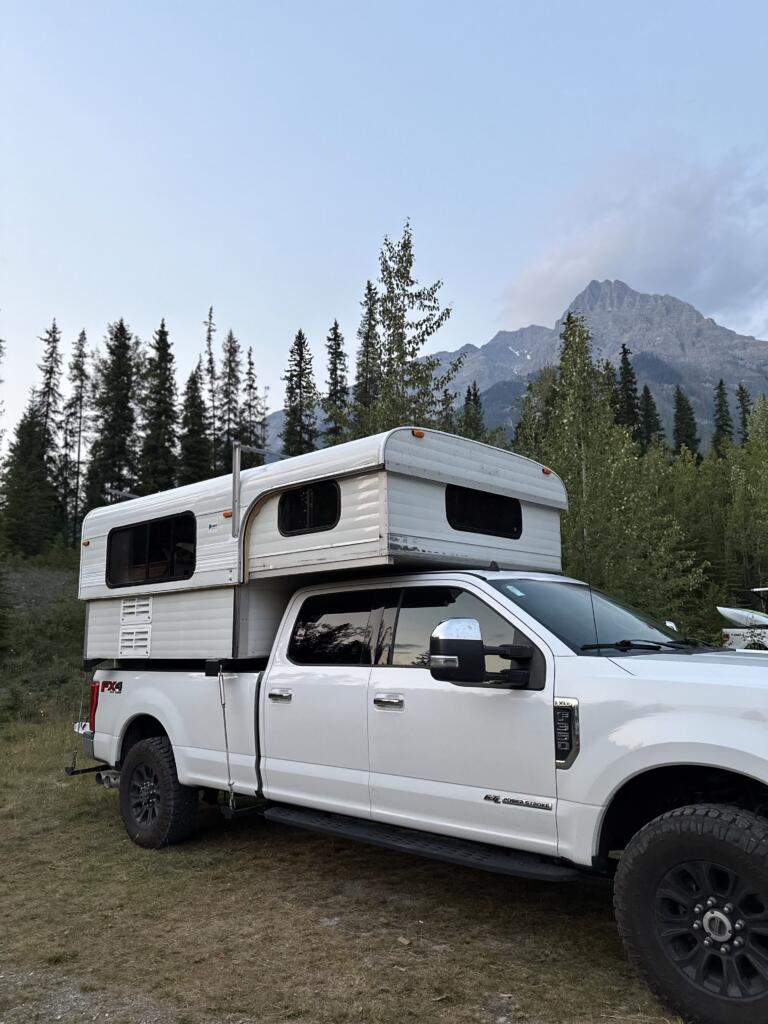
2002 Cabover — Better Than New
Full rebuild | New siding + walls | Rewired + reupholstered | Family of four + two dogs
Their final Alaskan came from Lake Tahoe — a 2002 cabover with the layout they needed and the kind of hidden water damage that sends most people running. But Curran’s eye for good bones (and a soft spot for a challenge) won out. When the pandemic slowed everything down, he and his grandfather spent those months rebuilding it piece by piece: new upper walls, fresh siding, rewired systems, refinished cabinets, and new upholstery throughout. “There’s nothing in that one we didn’t touch,” Curran said.
What began as a fixer turned into the family’s long-term rig — the one that still sets the rhythm for their seasons: a place to rest, reset, and head out again together.
Life Inside Their Alaskans
Inside the Alaskan, everything has its place. The kids settle into the cabover bunk with their coloring books while Curran and Dawn sit below at the dinette, coffee within reach, easing into the day. After coffee, the Alaskan shifts from breakfast nook to basecamp — the place they start from, not where they stay. Most of their time is spent outside — exploring, hiking, letting the kids run wild — but when the rain moves in or fog drifts through camp, it becomes a quiet shelter: the stove humming, cards on the table, and the calm that reminds them why they keep finding their way back.
“People are always shocked we fit,” Dawn said. “But once they see inside, it makes sense. It’s open. It works.”
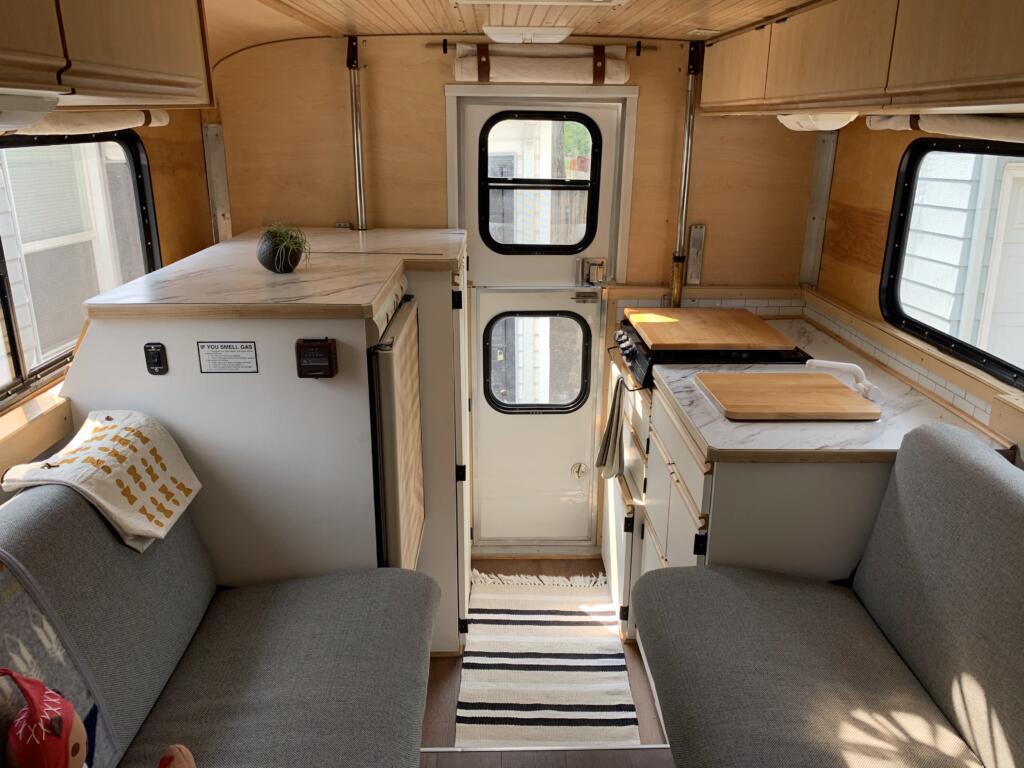
A Family Tradition by the Sea
Every Halloween, the Foleys load up the Alaskan and head for the Northern California coast. The road winds through redwoods and out to Gold Bluffs Beach near Fern Canyon — the kind of place that still feels untouched. (We won’t blow up their spot.) Ferns climb the canyon walls and cold water runs through the trail — a place so wild it stood in for the jungle in The Lost World: Jurassic Park.
They camp right on the sand, the kids dressed in costumes, fog drifting in by evening. In the mornings, elk cross the beach; at night, it’s the sound of waves against the camper and the sense that they’ve found something rare.
It’s our own little world,” Dawn said. “It’s magical.
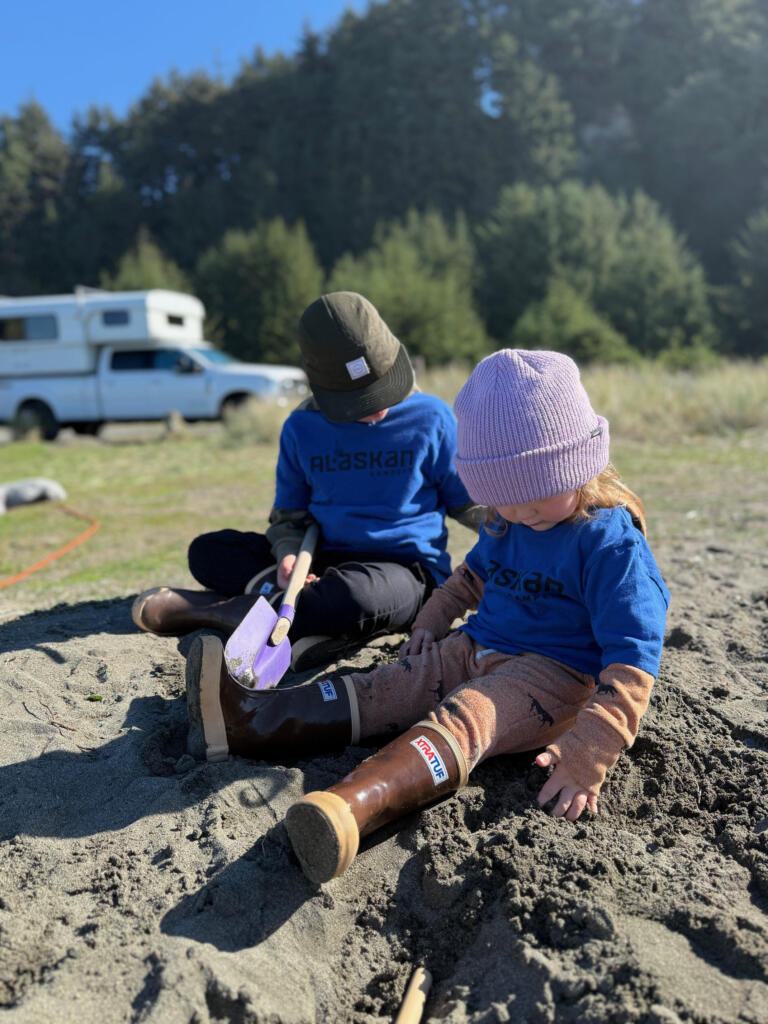
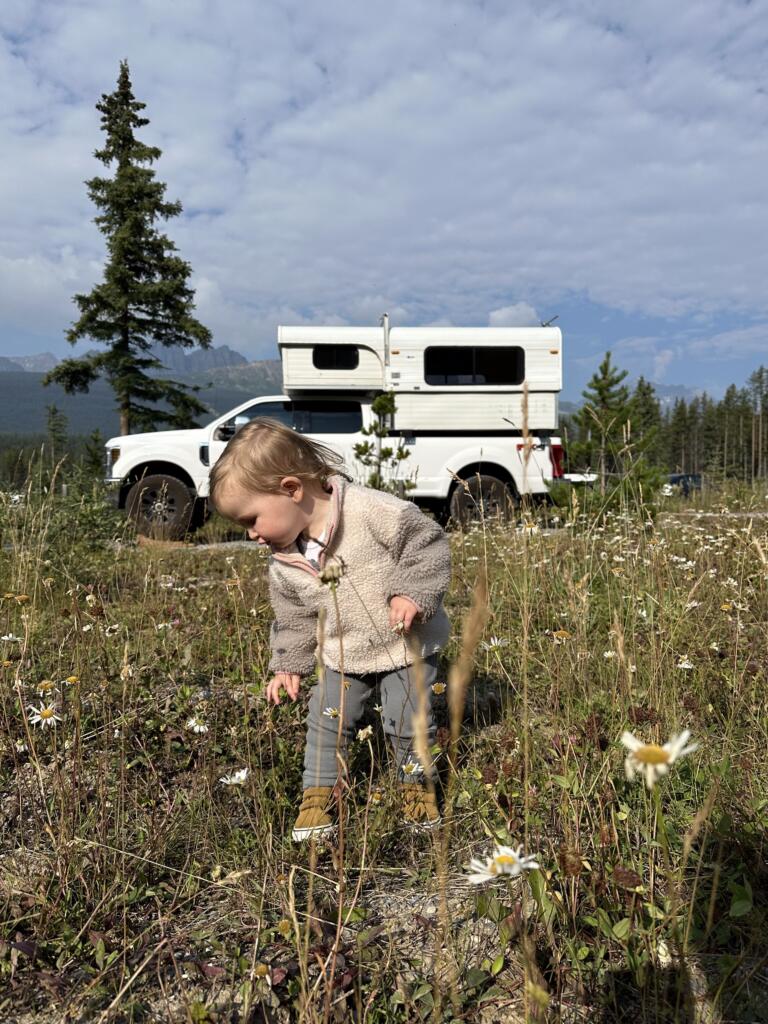
The Road Ahead
After four Alaskans, the rhythm comes easy. Pop it up, pack it down, roll out. They know every latch, every hinge, every sound the camper makes. It’s second nature now — more family than equipment. Curran likes to joke that he can “still fit through a Chick-fil-A drive-thru,” and that’s kind of the point. Freedom’s easier when you can still pull off wherever you want.
The Alaskan gives them room to roam and the flexibility to go anywhere — from the high desert to the coast — without ever feeling limited. What started as an escape has become something steadier — a way to stay connected, grounded, and together through every turn. Four campers later, the Foleys have found their rhythm, and they keep coming back to it for the same reason anyone who’s ever owned an Alaskan does: because the best things aren’t just built to just last — they’re built to carry you through.
